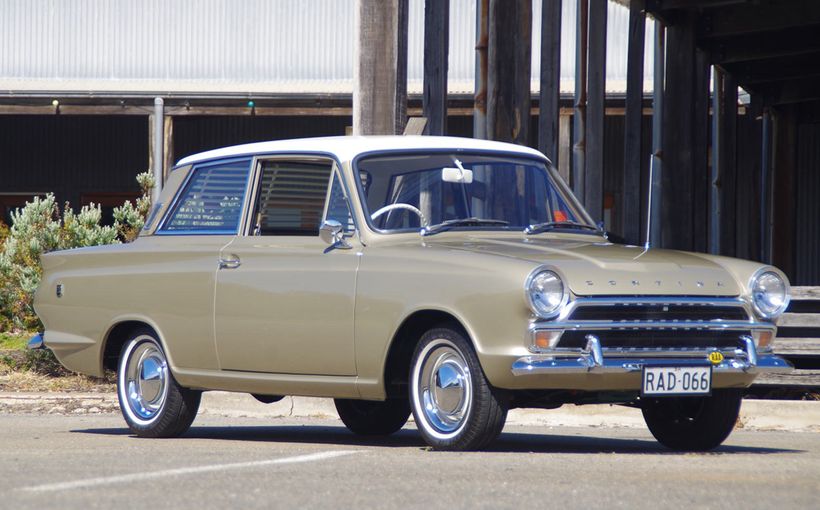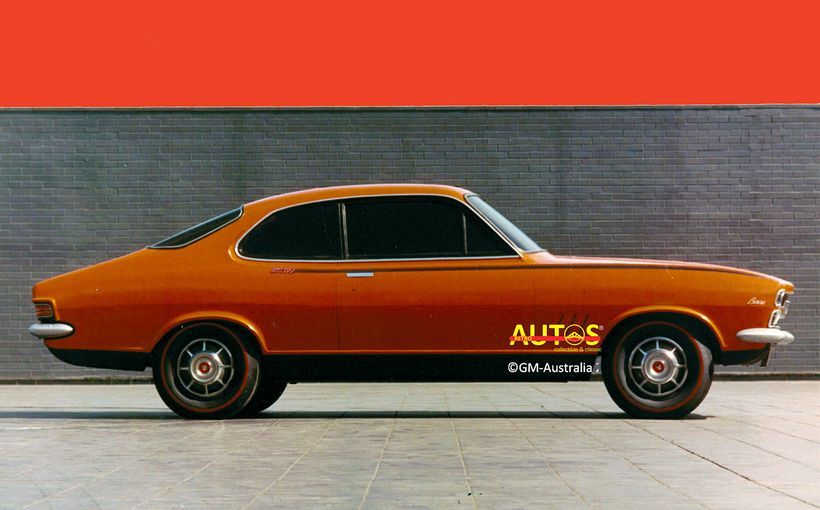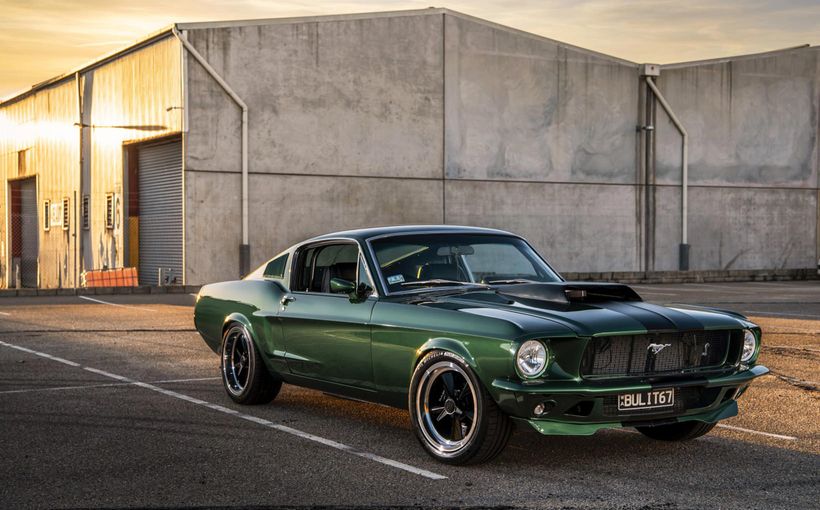XL Falcon & Zephyr Mk III 60th anniversary

Where were you in 1962?
It was the year the Big Four—Chrysler, BMCA, Holden and Ford—all released new six-cylinder family cars onto the market. Australian car buyers enjoyed a new found amount of choice. Just three years earlier Holden had the family car market largely to themselves. Not anymore!
In this final of a four-part Retroautos’ series, I focus on the XL Falcon and Zephyr Mk III.
Ford Australia was well placed in late 1962 to compete with Holden and withstand the impact of the new Valiant R/S and Austin Freeway/Wolseley 24-80. The XL and Mk III gave Ford two freshly restyled cars that covered the mainstream market and the niche which “always bought British.”


The Falcon’s memorable advertising proclaimed it was “trim, taut and terrific” with clean lines and a “Thunderbird” inspired roof line. In fact, the XL arrived two months ahead of the similarly shaped American four door Falcon.


Buyers were offered two six-cylinder engines. Standard was the 144 cubic inch/2.4 litre six with 90bhp/67kw. The larger “Pursuit” boasted 170 cubic inches/ 2.8 litres and pumped out 101 bhp/75kw. It had been introduced in May 1962, as an addition to the XK range. Both engines were larger and 15-33% more powerful than what Holden put in the EJ.
The car which gathered all the attention was the flashy “luxury” Futura. Priced at £1252, it was just 10% above the Falcon Deluxe. Ford claimed the Futura added “swank to its ranks” and was “a whole new world of luxury, sizzle and fun.”


The British built and locally assembled Zephyr Mk III had, its brochure said, “an overall fashion leading individuality.” In other words, it too had a Thunderbird roof line.
Its price of £1374 saw you driving behind a 156 cubic inch/2.6 litre six-cylinder engine pushing out 106bhp/79kw. You stopped using disc brakes—a very rare item—and changed gears via an all-synchromesh four speed manual transmission. The optional automatic raised the price to £1504.

Falcon and Zephyr: Sneak peek causes big changes.
But for a “sliding doors” moment back in 1958, the Mk III would have been what Australians saw in Ford dealerships in 1962 instead of the Falcon. Indeed, there would have been no Australian Falcon, because back in 1957 Ford Australia was planning to go head-to-head with Holden using a locally built and re-styled 1956 Mk II Zephyr.
Championing this project was Ford Australia’s then managing director, Charles Smith. Having no design facilities in Australia, Smith gave the task of re-styling the Zephyr to Ford in the USA.

In mid-1958 Smith and his team were in Dearborn reviewing progress of the car, now called the Zephyr Mk IIA. Authors Michele Cook and Douglas Wallace in their book Ford Australia write that when Smith saw the proposed Zephyr he was “scathing” about its appearance. Fortunately, the team were also shown a new “compact” car being developed for the US market, which had been given the project code “XK-Thunderbird”. In one of those legendary automotive moments, Smith and his team decided to ditch the Zephyr and go for the XK-Thunderbird, soon to be called “Falcon”.

The Falcon’s design journey had started during the last days of November 1957 in the Thunderbird styling studio, managed by Bill Boyer. By May 1958 they’d developed 20 different shapes. Trouble was, none fully satisfied Ford’s styling boss, George Walker, and Ford’s top decision makers. (The link to the Retroautos’ design to driveway story about the XK Falcon is at the end of this article.)


To inject some new ideas into the project Walker tasked two young designers, Gale Halderman and Don De La Rossa, with quickly developing an additional proposal. They presented a simple body shape, with two roof lines. One was a slim “bubble-top” proposal, the other a Thunderbird-like roof. Ironically, both were Boyer’s ideas. And, as often happens, the late entry of Halderman/De La Rossa shape was selected.


The bubble-top design was chosen for the inaugural model. The Thunderbird roof was held back until 1962, when it appeared on a mid-year “sporty” two door Falcon in the USA, called the Futura. It was then used on the 1962 Australian and 1963 American four door sedans.




Styling the Mk III
The styling of the Mk III Zephyr, and up market Zodiac, also began in 1957, with a planned launch in 1961. One of Ford’s top designers, Elwood Engel, developed the first proposals. When these failed to excite anyone, another design featuring a reverse raked rear window was presented. Ironically, this was also another Boyer idea, and was being applied to the 1959 Anglia and 1961 Classic Consul.

Not wanting to inflict the reverse window styling theme from the cheaper Anglia/Classic on its flagship model, Ford in the UK asked Italian designer Pietro Frua to submit a proposal. It is Frua’s design which formed the basis of the Mark III’s overall shape. By now the project was almost a year behind schedule.
In 1959 Walker promoted Roy Brown—he’d styled the Edsel—to manage the UK’s design studios. He finalised the Frua Zephyr/Zodiac, adding curved side glass (a UK first) and the Thunderbird roof line. The Zephyr was launched in the UK in April 1962 and then appeared in Australia. Brown also led the design of the Cortina Mk I and II.


Futura!
What all this meant was that when you walked into an Australian Ford dealership in August 1962, you would have unknowingly seen the result of a decision made four years previously by Charles Smith. The XL Falcon was the main attraction and centre stage was the sparkling Futura. The Mk III was the British cousin, relegated to the sidelines right from the start.
The Futura’s storied name said it all. Taken from Ford’s most celebrated and best-known dream car it was a name for the 1960s, space age triumphs, freedom and individual choice.
The car’s external embellishments were brash, boastful and came straight from the American model. Rocket shaped slashes of chrome exploded along its flanks. On the leading edge of the front fenders were translucent plastic wind splits. The bonnet was topped with a chromed edged (fake) air scoop.
The interior upholstery was ultra-bright red. The bucket seats were split by a chrome console. The chrome trim on the dashboard wrapped around into the doors, a nice Thunderbird touch. Carpet covered the floor.

Ford approached the pricing and optioning of the Futura very differently to Holden. Holden sold the Premier at £1420, which include a heater and automatic transmission. At £1252, Ford matched BMCA’s Wolseley 24/80 and undercut the Premier by over 10%. It was then up to the buyer to personalise their car with a bigger engine, automatic transmission, radio, white wall tyres and heater.
And right there you have it, the start of the great Australian options competition. It escalated so quickly that in 1968 Holden loudly bragged that it could make 1,000,000 HK models and no two would be alike, such were the numbers of options on offer.

Ford also upped the ante in the station wagon arena, offering three models. Top of the range was the Squire, resplendent with its fake wood panelling. It had the “luxury” wagon market to itself until May 1963 when Chrysler launched the Regal Safari and the EH Premier appeared in August. The problem with the Squire was that the fake wood was just too American for Aussie sensibilities. Sales were not strong. I reckon that the Squire would have sold much better if Ford had resisted the excessive Americana of imitation timber.



Would the Zephyr Mk III have made a better “Falcon”?
Had Charles Smith not seen the Falcon, the Zephyr Mk III would have been the logical successor to the Australianised Mk II A model. But would it have succeeded against the EJ Holden and R/S series Valiant?
Dr John Wright has written the definitive story on this topic. He and co-host Mark Oastler, have also featured the Zephyr Mk III in episode #93 of Shannons Club TV. The links are at the end of this story.
Dr Wright’s article is headlined “The Ford that could have beaten Holden.” Here’s what he says.
“Had history unfolded differently…. the Mark III Zephyr could easily have been the car with which Ford Australia knocked the Holden off the top of the sales chart……The Mark III would have been locally manufactured (as opposed to assembled from ckd kits), priced even more sharply and marketed like there was no tomorrow.”

Dr Wright compared it to the XL Falcon, EJ Holden, R/S Valiant, Austin Freeway and Wolseley 24/80:
“The Zephyr Mark III was the driver’s pick of all these cars. It was the only one with a four-speed gearbox and the only one with disc brakes. In terms of its performance and dynamics, the Zephyr was more evenly matched to up-spec cars like the Fiat 2300 and even the Mercedes-Benz 220SE than to the Holden or Falcon.”
And yet, those worthy attributes did not resonate with family car buyers. Sales slid to just 2000 per year. The XL was doing twice that number per month. Dr Wright summed up the situation:
“In Australia it (the MkIII) was in a kind of No Man’s Land, trimmed like a Holden Special but with the mechanical specification to challenge that Italian sophisticate the Fiat 2300 or the poised Mercedes-Benz 220SE…..1962 was the year of the Holden Premier and the Falcon Futura. In one sense this pair wedged the Zephyr Mark III. The Mark III Zephyr never achieved the success it deserved.”

Owning an XL
What’s it like to own an XL? Its survival rate is not one of its strong points, so well-preserved examples are treasured. Bernie Valentini and his son Chris found a Deluxe four years ago, which they now co-own. Bernie owns a number of Ford classics including an XY Falcon, an XC Cobra and 1972 Capri Mk V6 GT.
“We saw the Falcon at a coffee and cars organised by my car club, the Mornington Peninsula Historical Vehicles Club. A fellow club member had it for sale. It appealed to us as a solid and honest Falcon,” Bernie told me.
The history of the car is somewhat of a mystery. “Not much paper work came with the car when I bought it and the previous owner wasn’t given much either. I reckon we are the fourth or fifth owners,” Bernie says.

The Falcon has a manual transmission behind the smaller six. “The engine and all auxiliaries were so true to 1962 and how Ford designed all items, we were both suitably impressed,” Bernie says.
Despite the low geared steering—it is five turns lock to lock—and drum brakes Bernie says “it is easy to drive” in modern traffic.
The interior has been “reimagined” with striped upholstery. The exterior is stock, except for the rear indicators which have been “customised” with elongated lenses.

Shannons Executive Manager of Marketing, Mark Behr, fondly remembers his family’s XL wagon from the late 1960s.
“My recollections are going down to the family farm with trailer in tow and my fondest memory is riding in the back with my brother and sister, after visiting my grandmother. I recall lying in the back as Dad had carpet in there and looking up at the street lights whizzing by as we drove home at night,” says Mark.
Mark’s father also rigged up a TV set in the back. “None of our friends had that kind of tech in their cars back then,” Mark recalls with a laugh. He also wonders if the car is still on the road.
Some time ago Mark found a wagon similar to the one his family owned. It is in need of much work and is now in his garage awaiting restoration.



Was the XL a Success? What is its legacy?
Australia’s automotive history has tended to ignore the success of the XL Falcon. It did what it was supposed to do and improved Ford’s sales. The monthly average increased from 3000 to 4000 units, compared to the XK. That is a 33% lift, and a revenue increase, in today’s money, of approximately $400,000,000. For me, that’s success.
Another success shared by the XL and Mk III is the outcome of the 1962 Armstrong 500. Harry Firth and Bob Jane drove a factory entered Falcon to outright victory, followed by more Falcons in third, fourth and sixth. The XL filled the first four places in class B. Fifth outright was the “works” Zephyr, which also finished second in Class A behind a Studebaker Lark.

It would be easy to overstate the XL’s legacy. It was not as robust as its three competitors but it did offer great styling and a range of options. For me, it has three legacies.
Its primary legacy is that it kept Ford in the market at a time when the company might well have said enough is enough after the reliability issues with the XK. The sales increase gave confidence to those who worked hard to fix the Falcon’s problems, and buyers noticed.
The second legacy is that it demonstrated that a growing group of car buyers wanted choice and were prepared to balance the risk of less reliability to get it. It signified that the family car in Australia was transitioning from basic transport into a consumer/fashion item, where style and keen pricing were now part of the equation.

And number three is that the start of the “options game” can be traced to the XL. It may have only been the two engines and two transmissions, but they were available across the range. None of the other Big Four makers gave buyers this level of choice.

1962: A Year to Remember.
There is no denying that 1962 was a transformative year in our automotive history. It was a year of quickening change and expanding choice. It was the year that the Big Four began the intense battle that would continue until local production of cars stopped 55 years later.
You will never see its like again.
Retroautos is written and published with passion and with pride. Retroautos’ stories and images are copyrighted. Reproducing them in any format is prohibited.
Links to articles mentioned in the story: EJ Holden, Freeway/Wolseley, R/S Valiant, XK Falcon design to driveway, XK/XL Falcon Racing Garage, Racing Garage Ford Zephyr Mk III, Classic Garage Ford Zephyr Mk III and Shannons Club TV Zephyr Mk III.









